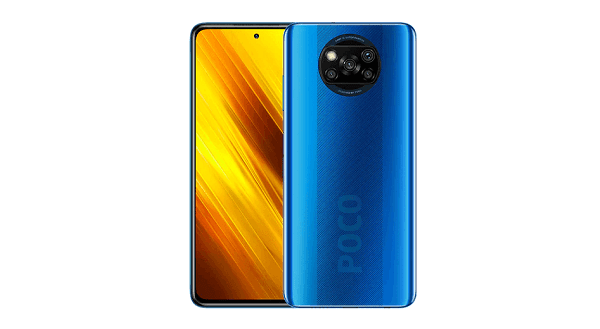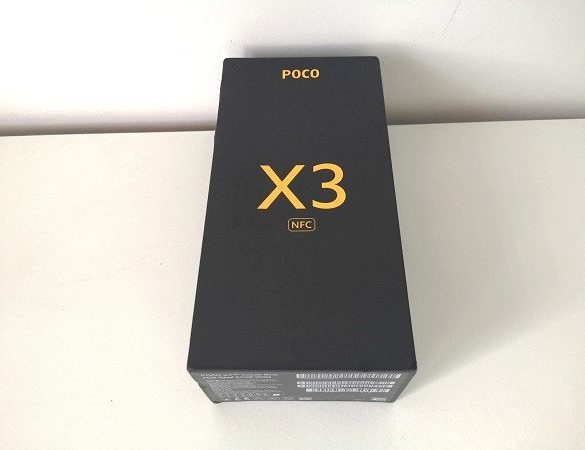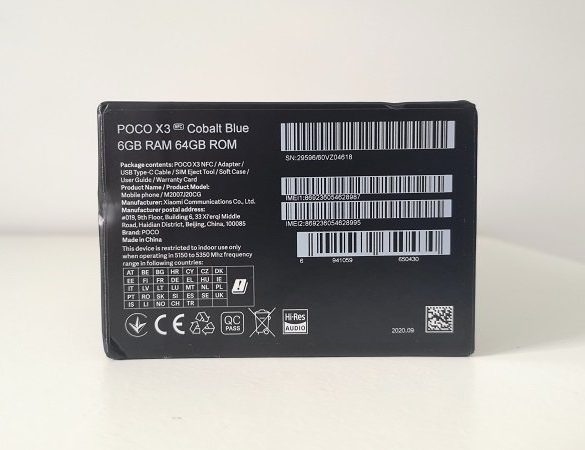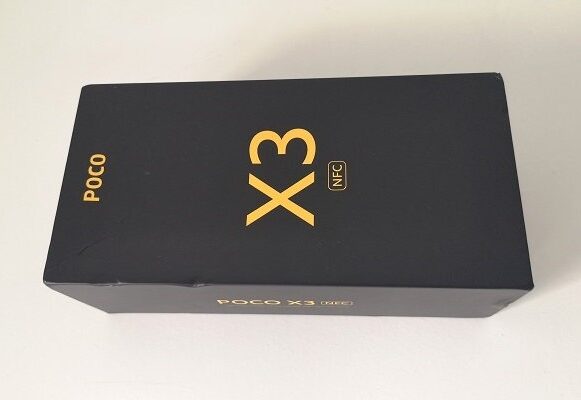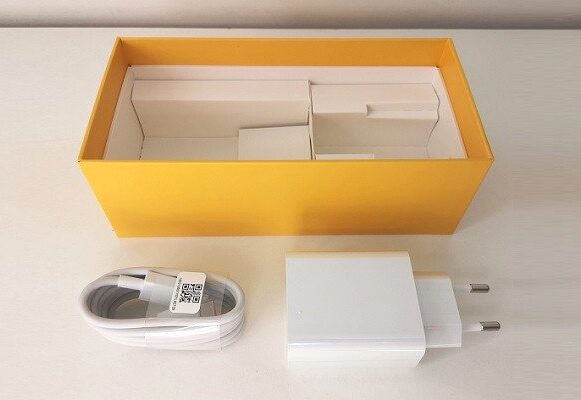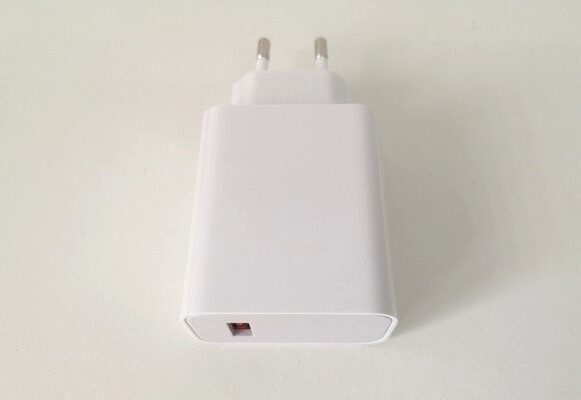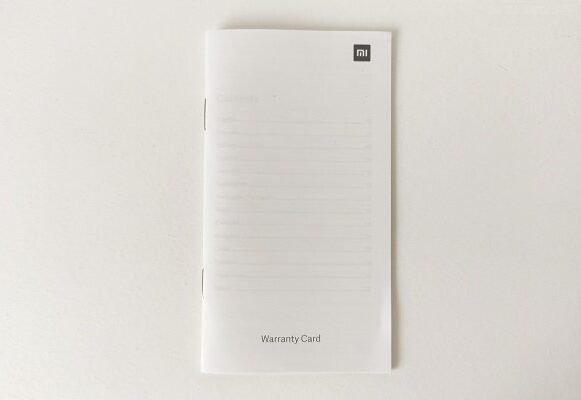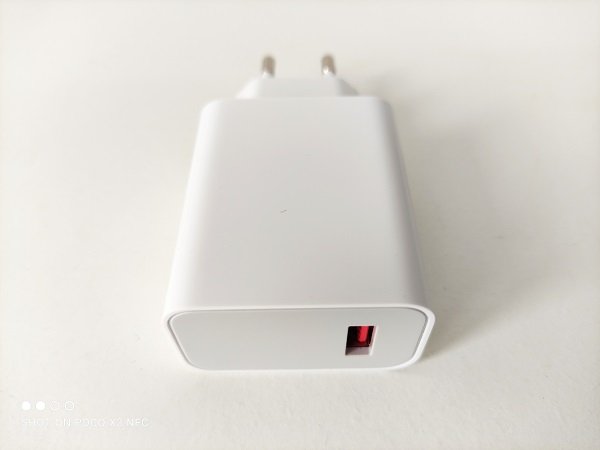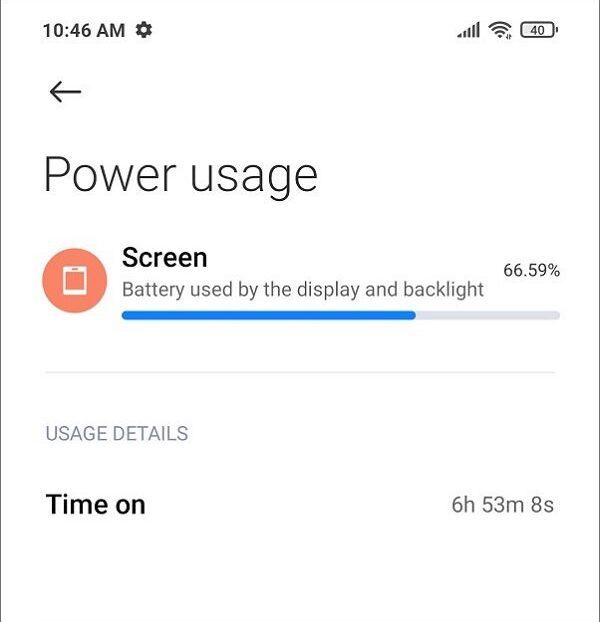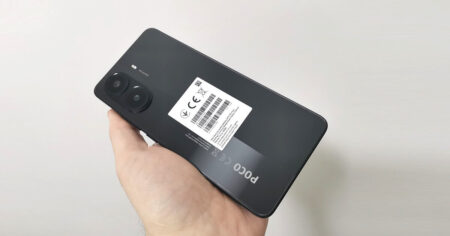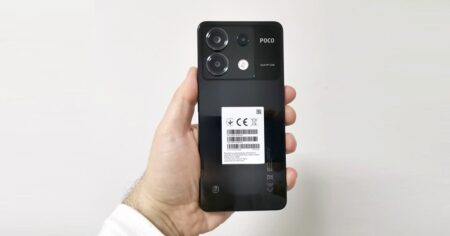Xiaomi Poco X3 NFC review & features .
Poco X3 NFC price and release date
As part of Xiaomi’s marketing strategy, the POCO brand was created as a separate independent entity in India by establishing an independent company, responsible for the market mid-range handsets as well as flagship smartphones to compete with OnePlus and Samsung. The POCO X3 was recently launched in India on 2020 September 22nd and achieved great success with 100,000 os unit sales in just three days. It’s sold in India at a retail price starting at ₹18,499 ($251USD) for the 128 GB / 6 GB RAM model. on other stores, including Aliexpress you can also find it in a price range of $220-290USD.
Positioning and price
The POCO X3 is positioned as one of the top affordable smartphones for the end of 2020 and possibly beyond, due to its excellent specification price-value ratio. The average price range for the high-end model with 6GB and 64GB starts at $250 and above, depending on the internal storage space configuration.
POCO X3 was initially designed from the Indian market. Xiaomi’s desire to become a key dominant player in India and worldwide has started to prove itself. The new handset comes with features every user would like to have such as the built-in NFC function, dual stereo speakers, large capacity 5160mAh battery, and a great 64MP rear camera array, which is more than capable of producing above-average quality photos.
Specs and Highlights
- OS/Software: MIUI 12 (Android 10.0)
- Chipset: Octa-core Qualcomm Snapdragon 768G, Adreno 618 GPU
- Display – 6.67″-inch display, 10-Points Touch Bright, and clear display in resolution of 2400x1080px with Refresh rate 120 Hz and brightness 450 nits.
- Memory & Storage: 6GB/8GB RAM – 64GB, 128GB, 256GB storage.
- Sony IMX682 rear camera with a 64Mp sensor takes great pictures, and the 20Mp front camera is designed for selfies.
- MicroSD slot – Yes, Expandable storage up to 256GB.
- IR blaster – Yes
- IP53 splash-proof – Yes
- Available colours: Cobalt Blue, Shadow Gray.
- A standard 3.5mm headphone jack – Yes
- Built-in NFC – Yes
- FM Radio – Yes
- Battery: Li-Po 5160 mAh Large Capacity Battery with Fast charging 33W.
- Sensors: Fingerprint (side-mounted), accelerometer, gyro, proximity, a compass.
Specification
| Release Status | Release 2020, Sep |
|---|---|
| Processor | Octa-core (2×2.3 GHz Kryo 470 Gold & 6×1.8 GHz Kryo 470 Silver) |
| Chipset | Qualcomm SM7150-AC Snapdragon 732G (8 nm) |
| GPU | Adreno 618 |
| RAM & Storage | 64GB 6GB RAM, 128GB 6GB RAM, UFS 2.1 |
| External Storage | microSDXC (uses shared SIM slot) |
| OS | Android 10, MIUI 12 |
| Battery | Li-Po 5160 mAh, non-removable battery Fast charging 33W, 62% in 30 min, 100% in 65 min (advertised) |
| Display size | 6.67 inches, 107.4 cm2 (~84.6% screen-to-body ratio) 1080 x 2400 pixels, 20:9 ratio (~395 PPI density) |
| Display type | IPS LCD capacitive touchscreen, 16M colors |
| Features | Corning Gorilla Glass 5 HDR10 120Hz refresh rate 450 nits type. brightness (advertised) |
| Dimension | 165.3 x 76.8 x 9.4 mm |
| Weight | 215 g (7.58 oz) |
| Body Type | Glass front (Gorilla Glass 5), aluminum frame, plastic back Water-repellent coating |
| Colors | Cobalt Blue, Shadow Gray |
| Connectivity | |
| SIM | Hybrid Dual SIM (Nano-SIM, dual stand-by) |
| Data Speed | HSPA 42.2/5.76 Mbps, LTE-A |
| Wifi | Wi-Fi 802.11 a/b/g/n/ac, dual-band, Wi-Fi Direct, hotspot |
| Bluetooth | 5.1, A2DP, LE |
| NFC | Yes |
| Infrared | Yes |
| USB | 2.0, Type-C 1.0 reversible connector, USB On-The-Go |
| Sensors | Fingerprint (side-mounted), accelerometer, gyro, proximity, compass |
| GPS | Yes, with A-GPS, GLONASS, BDS |
| Radio | FM radio, recording |
| Rear Camera | Quad: 64 MP, f/1.9, (wide), 1/1.73″, 0.8µm, PDAF + 13 MP, f/2.2, 119˚ (ultrawide), 1.0µm + 2 MP, f/2.4, (macro) + 2 MP, f/2.4, (depth) |
| Front Camera | 20 MP, f/2.2, (wide), 1/3.4″, 0.8µm |
| Video | 4K@30fps, 1080p@30/120fps, 720p@960fps; gyro-EIS Selfie: 1080p@30fps |
| Features | Dual-LED flash, HDR, panorama Selfie: HDR |
| Loud Speaker | Yes, with stereo speakers |
| Sound Jack | Yes 24-bit/192kHz audio |
| Radio | FM radio, recording |
Package(s)
Accessories Package
What’s in the box
- 1x POCO X3.
- 1x TPU protective case.
- 1x USB Type-C Cable.
- 1x Warranty booklet.
- 1x User guide.
- 1x Charger.
- 1x SIM eject tool.
POCO X3 | Unboxing All Items
POCO X3 | All Items
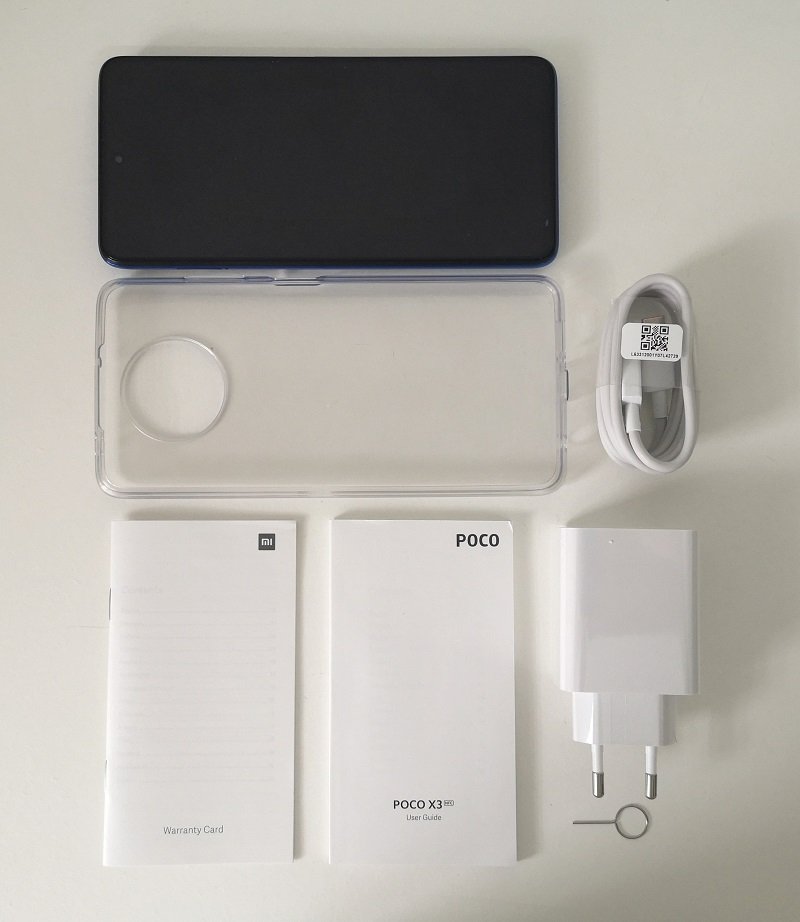
Design, materials, build quality
The POCO X3 Materials
The POCO X3 smartphone is made from an aluminum frame. For the display, Xiaomi used an impressive 2.5D curved glass screen combined with Gorilla Glass 5 protection that helps protect the device from scratch and short-distance drops.
As for the back cover, Xiaomi made it completely from a very high-quality plastic material in three main colors: cobalt blue, and shadow Gray with an imprint of the POCO brand name.
Most likely, that the weight consideration was a key consideration because the rear camera array also carries some extra weight to the device, something that Xiaomi most likely wanted to avoid, and still keep the device considerably light. The POCO X3 weight without any sim or case weighs exactly 220 g. Some users would find it pretty heavy to carry, but again it’s a matter of personal convenience.
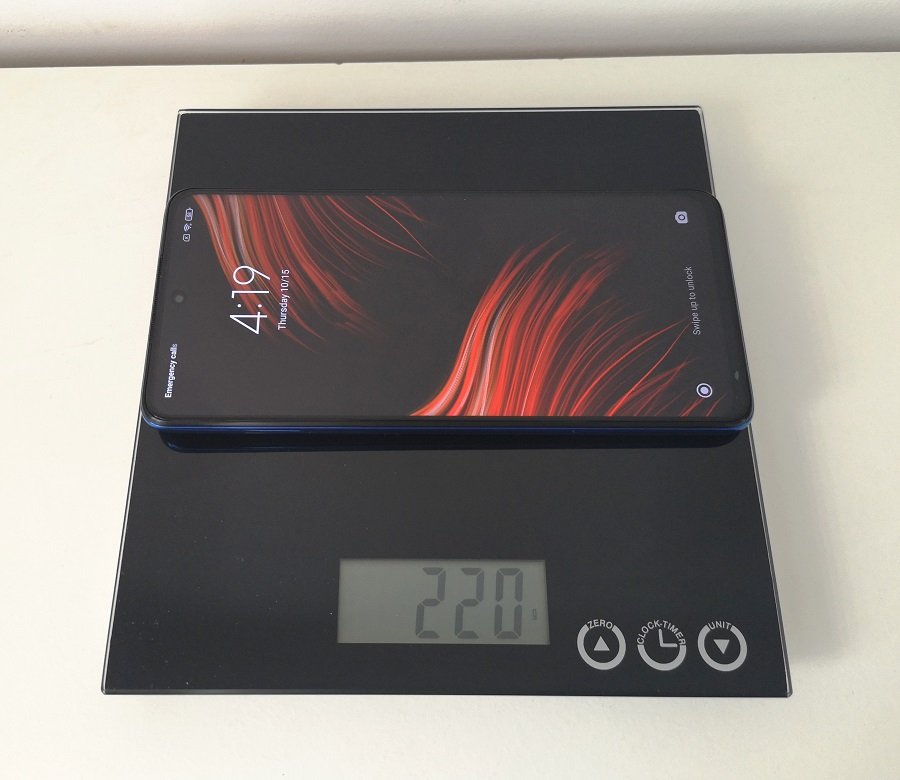
The POCO X3 Design
In the design arena, we noticed the camera array located on the back of the phone that doesn’t give the device a very elegant clean look and sticks out in about 3 mm. If you buy the POCO X3 you would know that buying a good protective case is a real necessity. It will help protect the camera lens from drops and scratches.
The POCO X3 Build Quality
Excellent as with most Xiaomi products. We didn’t find any flaws or problems in the design. The build quality looked very well and when holding the phone, we felt like holding an expensive premium device.
Xiaomi POCO X 3 | Full view
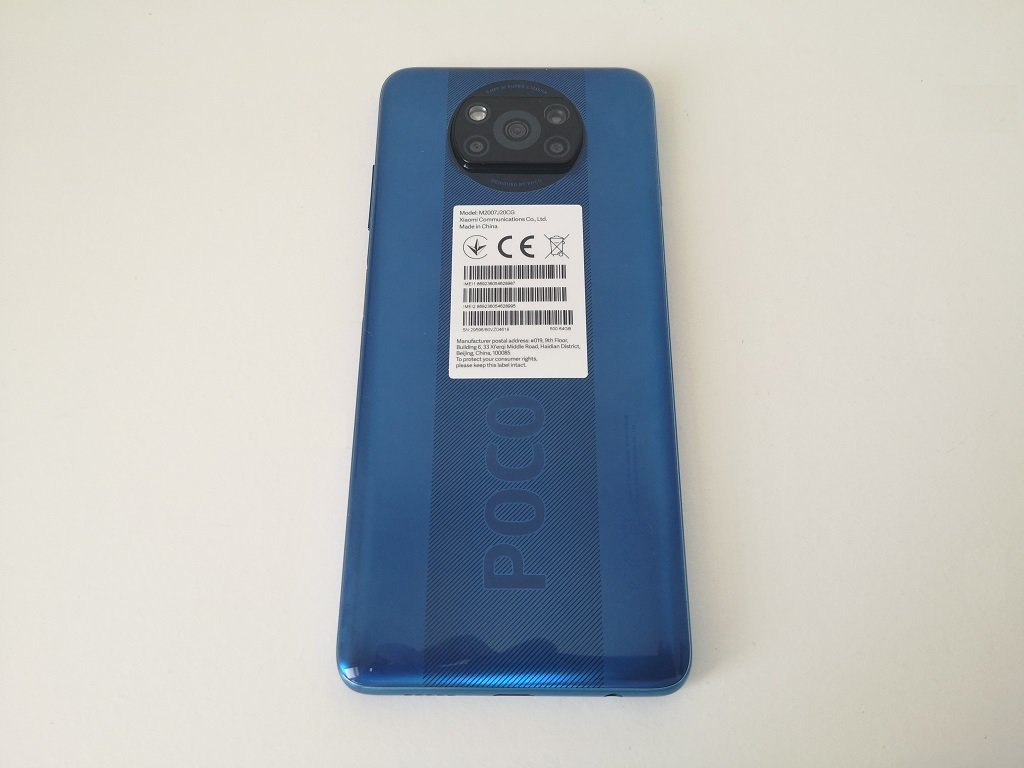
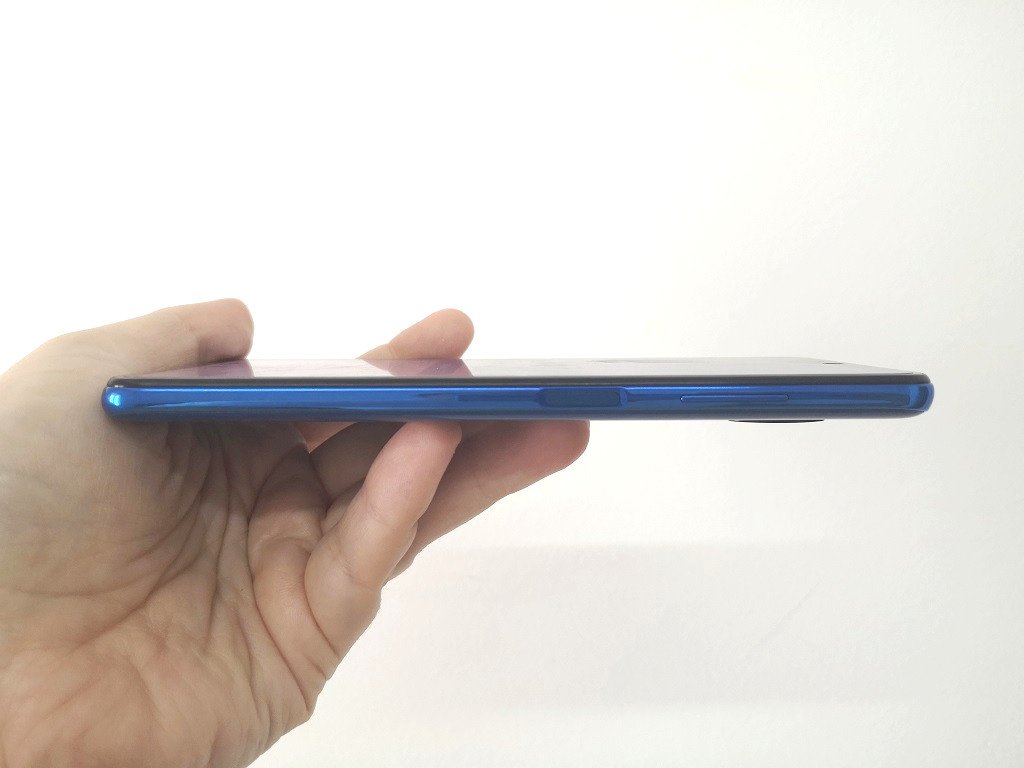


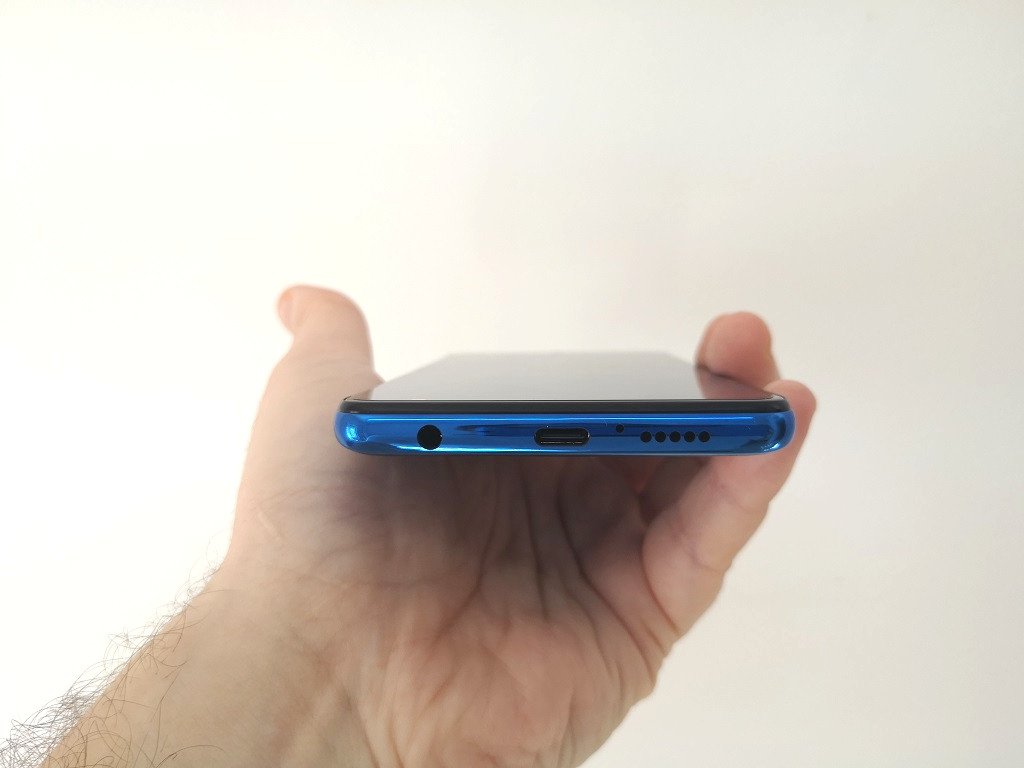
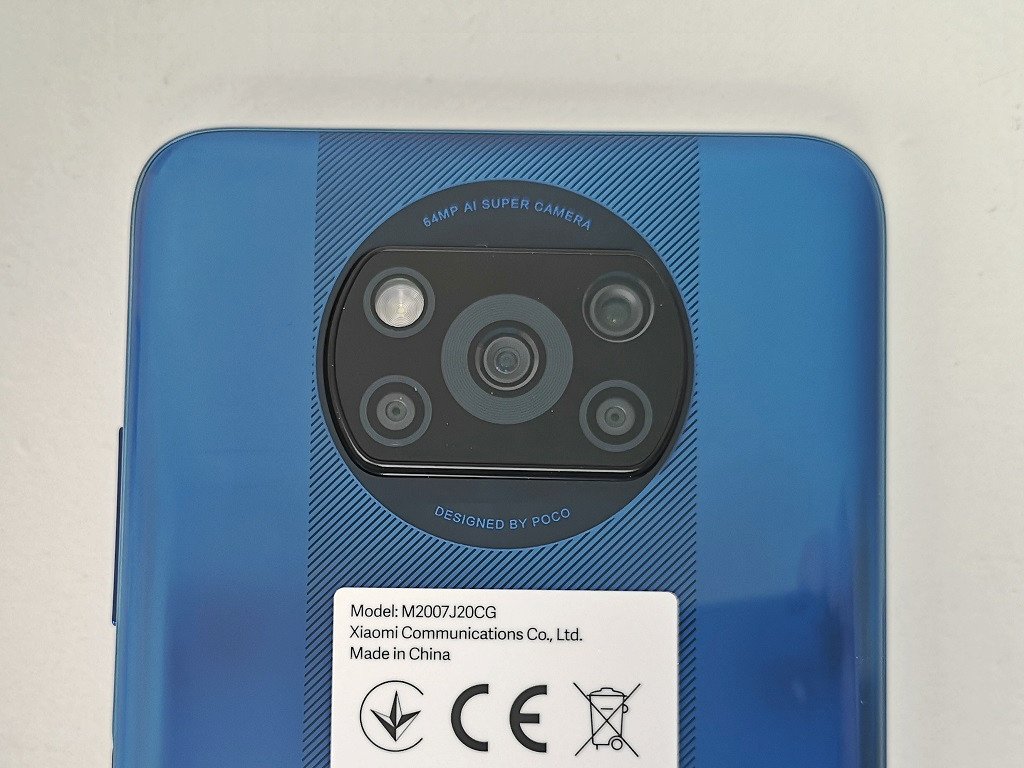

Display
The POCO X3 comes with a sharp 10-Points scratch-resistant LCD type display in resolution of 1080 x 2400 pixels with a density of 395ppi, 20:9 ratio, and a screen diagonal of 6.66 inches. It supports high refresh rates from 60Hz up to 120MHz. If needed, you can manually control the refresh settings under the display settings section and probably squeeze some extra battery life.
The POCO X3 squared elongated shape display makes it very easy to hold and operate the phone in just one hand. Besides, Xiaomi also integrated a light sensor that works pretty well in automatically adjusting the display brightness level according to different environmental conditions which helps to save power.
Another key element related to the design of the display is the 20 MP, f/2.2 selfie camera with Hole-punch Notch design, which gives the phone a great elegant look we really liked.

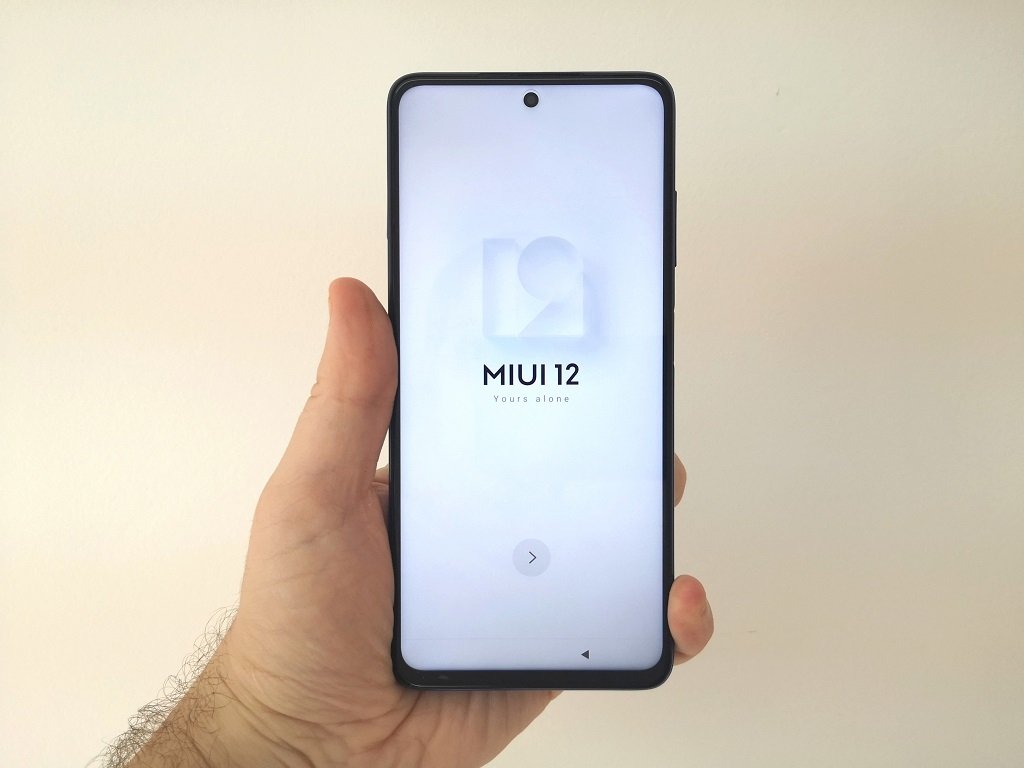

Hardware and performance
The POCO X3 is powered by a Qualcomm SM7150-AC Snapdragon 732G processor dedicated to the smartphone sector, it has a total of 8 cores: two cortex-A76 cores capable of operating at a peak frequency of 1.80GHz and additional six Cortex-A55 cores working at a maximum frequency of 2.30GHz.
POCO X3 | CPU-Z System information


Designed for Gaming
At the heart of the POCO X3, you will find a Qualcomm Adreno 618 GPU designed for upper mid-range users. To improve the gaming experience, Xiaomi included a special game boost feature that works with a few popular games that were also pre-installed in MIUI software such as Block Puzzle Guardian, Bouble shooter with friends, Bubble story, Tile Fun, Block Puzzle Guardian, Crazy Juicer, and Dust settle.
Charging & Battery life
The POCO X3 comes with a large capacity non-removable battery Li-Po 5160 mAh battery can potentially that last up to 2-day in moderate use. In our opinion, the battery life is closer to a day in normal usage. Xiaomi used an LCD that consumes quite an amount of power instead of choosing an AMOLED display. Xiaomi also included their Cleaner app and battery power management tools that help clean temporary Internet files, cookies, history, memory, redundant, and cache files.
Charging Time
Another important feature we found is fast-charging 33W support. Poco X2 has 33W fast charging over Power Delivery standards. It has three charging profiles at 5V 3A, 9V 3A, and 12V 2.5A. According to our test, after fully discharging the battery it took exactly 60 minutes to charge the POCO X3 phone to %100 capacity.
POCO X3 Charger
Battery life
POCO X3 comes with an exceptionally high capacity Li-Po 5160 battery that will last you about a day (depending on the type of usage). In a very modest usage with some browsing and IM with display brightness set manually to ~%25, the power consumption for %55 was 2855mAh with a very respectful time on Screen of 6h 53m. Keep in mind that with more aggressive power management settings, you will most like can achieve up to 7h of time on screen.
POCO X3 | Battery Power Consumption
Cameras
At the core of the POCO X3 quad-camera array, you will find a Sony IMX682 sensor with an aperture of f/1.89, along with additional three sensors for ultrawide, macro and depts photography. For the front selfie camera, Xiaomi implementer a 20MP camera with an aperture of f/2.22 that produces pretty decent quality photos.
Main (Back) Camera:
- 64 MP, f/1.9, (wide), 1/1.73″, 0.8µm, PDAF.
- 13 MP, f/2.2, 119˚ (ultrawide), 1.0µm
- 2 MP, f/2.4, (macro).
- 2 MP, f/2.4, (depth).
Selfie Camera: 20 MP, f/2.2, (wide), 1/3.4″, 0.8µm
What quality photos can you expect?
Optimal light conditions
In optimal light conditions, you can expect the POCO X3 to produce high-quality photos, nor less than those you can find in high-end smartphones. Based on our tests, the main 64 MP camera performance was pretty impressive and responded very fast when focusing on photographed objects.
Low light conditions
As expected, in low light conditions the POCO X3 64MP camera performed pretty much as most mid-range smartphones, producing average quality photos. Again, being realistic, you should not expect a $250+ device to have the same level of optics as in a $500 premium smartphone. Having said that, The quality of the shots also depends on the specific light conditions. With the right conditions with just using street lighting without any flash assistance, we managed to produce some good photos.
Zoom Factor
The POCO X3 supports optical zoom with a scale factor of x0.6,1x and x2. Beyond those values between x4 up to x5, you will still be able to take good decent shots, but when the zoom factor is increased using digital zoom, the shots will look less Impressive.
POCO X3 | Zoom shots of a building: x0.6 / 1x / x2
Xiaomi POCO X3 Camera samples
Day Samples
Night Samples
POCO X3 | Macro Shots (Daylight)
POCO X3 | Selfie (Daylight)
Video Recording
POCO X3 supports four recording modes: 720P@30fp, 1080P@30, 1080P@30, and 4K@30fps. The rear camera has optical image stabilization (OIS) to counteract camera shakes. It works best in walking on a bumpy road or another type of light usage. Overall, our video experience was excellent.
Video Sample | 1080@P60fps
Video Sample | 4K@30fps
Poco X3 vs Huawei P20 Main Camera
For reference, we tested the Huawei P20 phone’s decent quality 20MP main front camera against the POCO X3 64MP rear camera. Although both devices use different camera sensors, the results were pretty supersizing, and if we can honestly say that both phones are almost equal in terms of the quality of shots with a slight advantage for Huawei P20 device in producing more natural with less intense colors compared to the POCO X3.
Test Sample – 1 of 4 (Indoors)


Test Sample – 2 of 4 (Outdoors)


Test Sample – 3 of 4 (Outdoors)


Test Sample – 4 of 4 (Outdoors)


Sound
Experience listing to music with the POCO X3 was good. It’s most likely you would not find almost if any dual stereo speakers systems in a $250+ smartphone. From our impression, the POCO X3 sound quality was good and reasonably loud.
Biometric unlocking
Xiaomi implemented a fast response side-mounted fingerprint sensor within the power on/off button, located on the right side of the POCO X3 just beneath volume rocker buttons. It’s very comfortable having the fingerprint sensor on the side, because it’s very accessible within one handgrip, instead of trying to reach the sensor on the front or back of the phone.
POCO X3 | Control Buttons

Firmware and software
Xiaomi did a great job designing the MIUI 12.0.X, which is a very responsive user interface packed with tons of interesting features built on top of Android 10.0 OS. Our experience using the MIUI was nothing excellent, and everything worked very smoothly.
How to Remove Unwanted Ads from MIUI 12
As part of Android OS, Xiaomi decided to implement a googles advertisement recommendation engine that pushes unnecessary advertisements into a few MIUI system apps. If you want to disable the Google ads recommendation feature, you can do it in a few steps:
Step #1 – Disabling msa Service:
Settings>password and security>Authorization & revocation and set msa off. Now, you will have to wait 10 seconds before you can tap Revoke.
Step #2 – Disabling Ads inside all MIUI system Apps:
| Navigate to.. | Option to Disable |
| Cleaner> Settings | Receive recommendations. |
| Music>Settings>Advanced settings | Show ads Online content services |
| Downloads>Settings | Show recommended content. |
| File Manager>Settings>About | Recommendations |
| Mi Video> Profile option> Settings | Personalized recommendations. |
| Themes>My page>Settings | Recommendations |
Step #3 – Under Settings>Privacy> Ads enable Opt-out Ads Personalization
Step #4 – Removing advertising during apps launch: Just after installing any App click the upper right Settings button and disable Receive recommendations.
Other useful features
IR Blaster
Among the standard sensors you can find in most smartphones, Xiaomi also included an IR Blaster that lets you use your phone as a universal remote control unit. Using ‘Mi Remote app, you can control a wide selection of home electronic appliances such as AC, Cameras, TVs, and Fans based categories and manufacturer names.
Xiaomi also included Mi TV/Mi TV Box in the list of manufacturers. The IR blaster is not a must-have type of feature to have inside a smartphone. However, still, it’s nice to have it, especially if for some reason you lost your Mi Box remote control, and you don’t have any immediate alternatives to operate your device.
POCO X3 |Appliances list by categories (IR Blaster Apps)
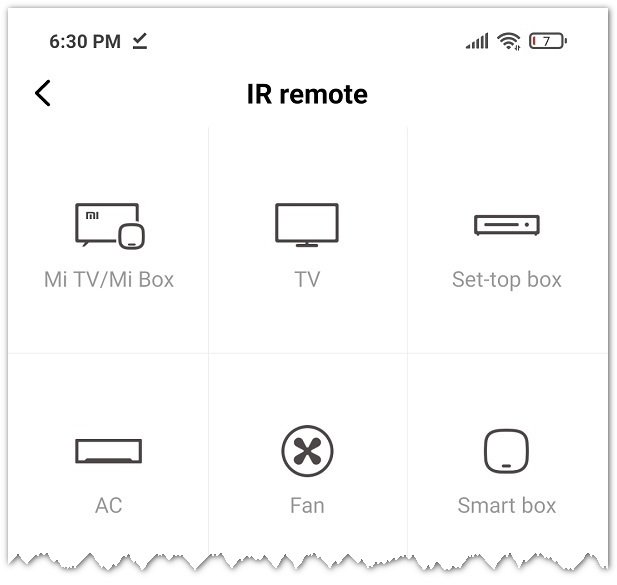
IR Blaster App| Set-top box remote c. virtual keys layout

FM Radio App
The POCO X3 Radio App is easy to operate. It offers manual and automatic and manual radio station presetting with recording options. Although, it’s less recommended we were able to receive a few radio stations without plugging an earphone into the phone 3.5 mm headphone jack.
POCO X3 | Radio App
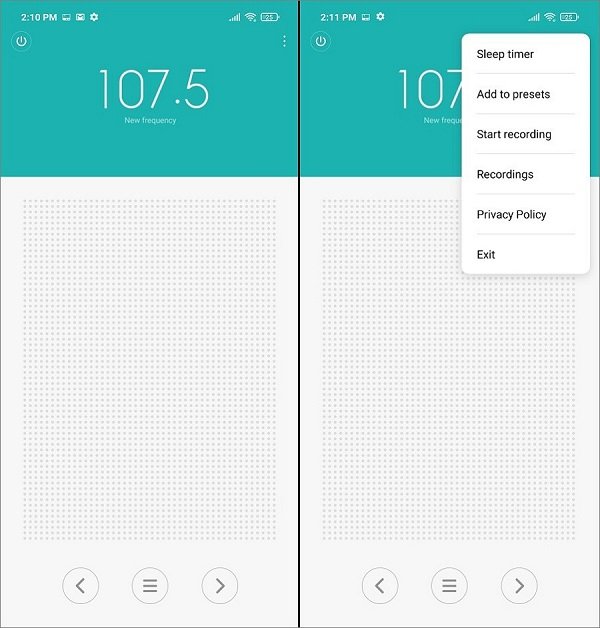
NFC
Xiaomi also included NFC support inside the POCO X3. You can surely say it’s the amongst top highlight of this phone, becoming more popular worldwide. NFC secure technology is a real necessity when used in a wide selection of electronic wallet applications.
Verdict
POCO X3 is a superb high-value handest we definitely recommend buying. It has all the functions most users would ever possibly need and more, including NFC support at a super low price tag.
On the less positive side, you should consider twice when buying it for a young teenager that might not like the idea of carrying a 220gr smartphone that can accidentally drop the phone and cause damage to the back camera lens. Having said that, if you do choose to buy it, picking a high-quality rigid type case will provide excellent protection for this phone and is a real necessity.
Where can I buy the Xiaomi POCO X3 ?
If you find this smartphone very cool and affordable as we did, you are welcome to check more details on Banggood Official store link posted below:
Discount Coupon: BGPX3
Final Price: $229
Expiration date: 10.31

